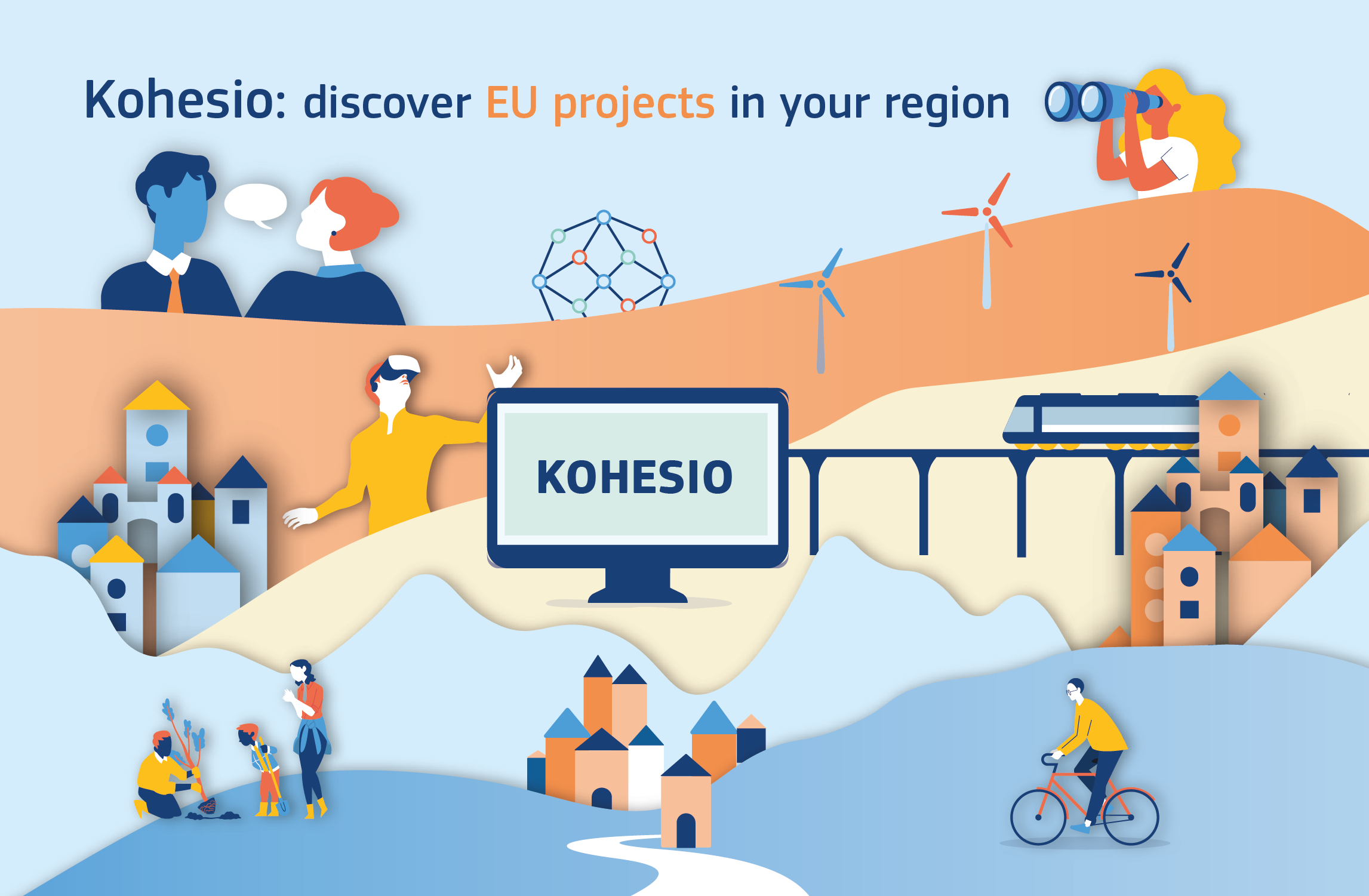
If you are a devoted follower of regional and urban policy or EU funded initiatives, you might already be familiar with Kohesio, the European Commission’s online platform that quite literally puts an ever-increasing number of EU-funded projects on the map.
Kohesio's Evolution: Empowering Users
Since its launch in 2022 Kohesio has continuously evolved, offering new possibilities to monitor, research or simply stay informed about the projects supported by the European Regional Development Fund (ERDF), Interreg, the Cohesion Fund (CF) and the European Social Fund (ESF). Boasting an already extensive archive of projects from the 2014 – 2020 programming period, Kohesio will remain the go-to platform for gathering information on the 2021 – 2027 period, as well as initiatives supported by the Just Transition Fund.
The platform provides details about funding, beneficiaries and, when available, links to websites or audio-visual resources. This wealth of information is easily accessible through a user-friendly interactive map, aiding in pinpointing precise projects across the EU’s regions. In the words of Brit Koppel, Estonian National Communication Coordinator “Kohesio is good to see what has been implemented across Europe with the support of European funding. It gives a broader picture of how much cohesion policy actually affects the countries of our Union - from bridges and roads to supporting small businesses or restoring the environment. It It is good that it is possible to sort projects by topic and also get good project ideas for your country. Thanks to the map application, when planning a trip abroad, you can see if there is an interesting EU-supported project on your way to visit.“ Sandra Chaignon, French National Communication Coordinator, also said "I think Kohesio is a great tool to have an overview of the great variety EU co-funded projects all over Europe. It gives a broad picture, which reminds us we are all part of the EU, and at the same time allows us to go into the details of a project. It is available in several languages which, I think, is easier for non-English speaking people. I still need to experiment the feature to embed the maps onto the French national website. Overall, the map showcasing projects is a great added value for stakeholders, journalists, potential beneficiaries, and all citizens eager to know what Europe does for them."
The map can also be embedded on local authorities' websites, catering to their needs. Those interested in embedding it can reach out to the Kohesio team (or find the embedding procedure on Github).
Kohesio and InfoRegio: The Digital Cohesion
Furthermore, Kohesio complements the rest of the European Commission’s digital ecosystem, particularly InfoRegio, the main source of information on programmes, funding, news and stories under the umbrella of Cohesion Policy.
With such a system in place, citizens, journalists, researchers, and policymakers are a few clicks away from a comprehensive overview of EU-funded projects. Born out of the necessity of making the policy accessible to citizens and allowing them to delve into sometimes cryptic EU regional policies, Kohesio is already a key communication asset. This sentiment is echoed by the responsible for the communication of the Romanian North-West Regional programme, Ovidiu Mărginean, when he says “the Kohesio platform is an extremely useful tool to extract information for the presentations, it has so many useful options for themes and stories. It is also the source of inspiration for display statistical data on our regional programme website.”.
Morevoer, besides its usefulness in communicating EU-funded projects, Kohesio keeps nursing its ambition of being the reference for transparency and civic monitoring.
In 2023, it was made available in all 27 EU member states' languages and integrated an AI-powered “research assistant”, suggesting more refined keywords when browsing the library of projects.
The novelty does not end there, as a new feature is being added in Kohesio next update. As many people working on EU-funded projects already know, Kohesio’s
results from the data gathering efforts of individual Member states, which the European Commission compiles and aggregates to create a cohesive overview at the EU level.
Introducing the "Professional Space"
The newest update concerns this aspect, as a "professional space" is being introduced. It's a back-end text editor that will allow national and regional authorities to edit and curate the description and multimedia content associated with each project. Besides the quantitative data related to a project, Managing Authorities will be able to provide a clearer narrative for the project's context, expected results, and the benefits for the community associated with it.
Launching in mid-March 2024, alongside a fresh batch of data, this update will also incorporate another AI-assisted system. This system will help catalog projects by awarding a score to project descriptions based on their thoroughness and readability. The goal is to give more visibility to projects that provide clear and detailed explanations of their purpose and ambition.
Elevating Project Visibility with Kohesio
With this latest feature, managing authorities now have a powerful tool to enhance the visibility of their projects. With more polished project descriptions, users of all kinds will be able to access more thorough, nuanced information that goes beyond mere statistics. This innovation will help managing authorities in explaining and contextualizing EU-funded initiatives, capturing the essence of each project and its impact on citizens lives.
Kohesio’s new feature illuminates the transformative power of EU-funded projects but also brings citizens closer to the heart of their progress. One thing is for certain, such a bounty of information can help further closing the gaps between the planning at EU-level, the endeavors of managing authorities and the appreciation of the communities they serve